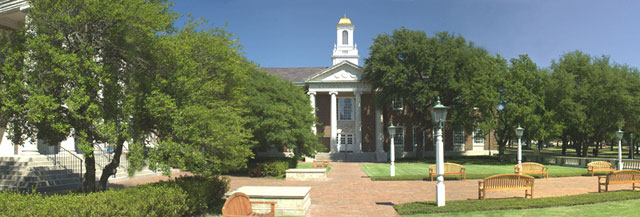

|
In 1961, Glenn Chesnut began studying for the Methodist ministry at Perkins School of Theology at Southern Methodist University in Dallas, Texas.
The basic seminary degree in those days was called the B.D. or Bachelor of Divinity. Students had to complete a four-year undergraduate degree before entering the seminary program, which took an additional three years. There were around a hundred students in each entering class at Perkins, for a total of around three hundred students. |

|
Another of the Perkins School of Theology buildings, which were set out by themselves over on one corner of the Southern Methodist University campus. Almost all of the wealthy Texas oil families were Southern Baptists -- it seemed as though all a Baptist had to do was stick a shovel in the ground in those days, and he would find oil -- but a few, including the Perkins family, were Southern Methodists, and contributed the beautiful buildings which made up the seminary.
A Methodist from south Georgia named Albert C. Outler had been Dwight Professor of Theology at Yale University. He then decided however, out of loyalty to the Methodists, to come to Perkins and work on turning it into a good seminary. Largely due to him, it had by the 1960's become one of the ten best graduate theological schools in the United States. |

A photo of Glenn Chesnut taken on his graduation from the University of Louisville in 1960, shortly before he turned twenty-one.
|

|
The chapel at Perkins, with its tall spire. There was a stark simplicity to its beauty. The inside in those days was painted pure white, with white shutters and clear glass instead of stained glass windows. Except for the dark brown wood of the pews, the only other color in the chapel came from the red banner with a gold cross embroidered on it which hung behind the white wooden altar.
In those days, the Southern Methodist communion service was basically just an English translation of the medieval Roman Catholic mass, sung to ancient chants which had been modified so that they could be sung in four-part harmony. I still love the words of the Gloria in Excelsis:
|
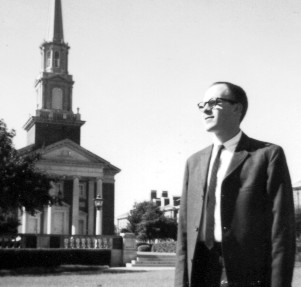
|
Glenn standing in front of the chapel, in a photo taken around 1963 or 1964, when he was about 23 or 24 years old.
Glenn was mentored by Albert C. Outler, who had made his reputation as a patristics scholar when he was teaching at Yale (patristics is the study of early Christianity during the first five to seven centuries). This was to be Glenn's specialty when he went to Oxford University to work on his doctorate. After coming to Perkins, Outler had moved into a new field of research. He and several other Methodist scholars began the serious study of the theology of John Wesley, the eighteenth-century Anglican priest who taught at Oxford University and was one of the key founders of the modern evangelical movement. The Methodists, as Wesley's followers were called, formed their own independent church in America right after the American Revolution was over, to avoid being thought of as Tories and sympathizers with the English king. So Glenn began developing his interest in John Wesley at that time also, and taught some graduate courses on Wesley later on. |
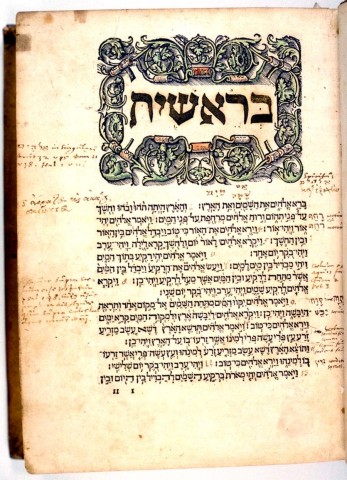
|
The Perkins School of Theology library had just begun creating its marvelous collection of rare books and manuscripts. This one is in Hebrew.
Glenn learned to read both biblical Hebrew and New Testament Greek while he was at the seminary. During his last year there, and continuing at Oxford University, he went on to learn to read the ancient classical Greek of four to five centuries earlier. |
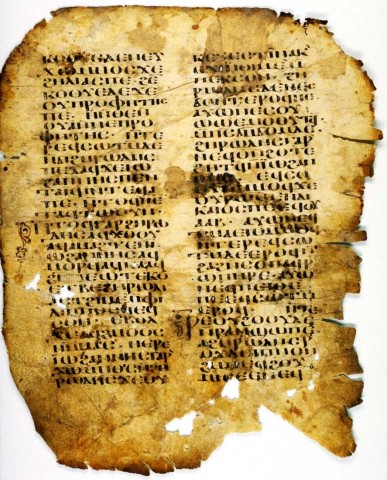
| A page, found in the sands of Egypt, from a Coptic version of the gospel of Mark, in the Perkins School of Theology collection. Dechard Turner was the librarian at the seminary library who started assembling their extraordinary treasure trove of ancient books. Glenn got to take a course from him on early printed books produced during the half century or so after the invention of the printing press. |

|
An illuminated Latin manuscript from the Perkins library's collection of rare books. Glenn got to brush up on his Latin by translating an early printed book written by Antonino of Florence, to help one of the seminary professors who was doing research in that area.
This was Frederick Carney, who was an expert on Christian ethics. Like almost everyone in ethics during that period, Carney was strongly influenced of course by Reinhold Niebuhr (best known to the general public as the author of the Serenity Prayer). Carney nevertheless thought of himself as being primarily interested in the natural law tradition.
Albert Outler had been a leader in getting American Protestant seminaries to realize the need for teaching their students about modern pyschiatry and psychotherapy, so he made sure that the Perkins theology students were also given courses by competent and well-trained psychotherapists on how to do counseling. This was where Glenn first began developing his interest in psychiatric theories and psychotherapeutic methods.
|
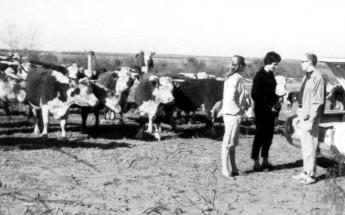
| Glenn is over on the right hand side. This photo was taken during Thanksgiving Vacation one year on a cattle ranch in northern Texas, in the barren region known as the Llano Estacado or Staked Plains. |

|
This photo was taken when Glenn returned briefly to Kentucky in the summer of 1964 to be ordained as a Methodist minister by the Bishop of Louisville and (if his memory serves him) the Bishop of Philadelphia. Glenn is in the front, second from the right.
The Methodist Bishop of Louisville during a large part of this period (the bishop to whom Glenn reported) was a man who had been the second person to serve as editor of The Upper Room, the little meditational pamphlet which the Southern Methodists had begun publishing in Nashville in April of 1934. After the early A.A. movement split from the Oxford Group (Bill W. broke with them in 1937), the Methodist theology of The Upper Room was the strongest influence on A.A. spirituality all the way down to 1948. I would have to check the documents from that period, but I am almost certain that this was the bishop who ordained me in 1964. |